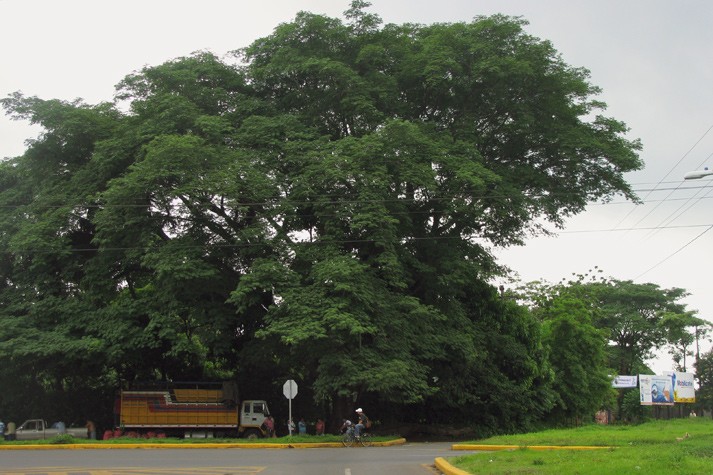Guanacaste
The name Guanacaste originates from the language of the indigenous Nicarao people, Nahuatl, and literally means ‘Tree of Ears’ or ‘Tree that Listens’ (from ‘Guautil‘ -tree, and ’Nacaztli’ – ear). Legend recounts the Nicarao would not talk near the tree due to the large ear shaped seed pods, which could hear their words and betray them to their gods. Modern English finds the roots of words such as avocado, chocolate, coyote and tomato in Nahuatl, an Aztec language which originated in Mexico in the 7th Century and is still spoken today in some areas.
The tree itself can be very large, up to 35m (115ft) high, with a thick trunk and a large canopy span, creating excellent shade which nowadays is used for shelter for grazing cattle or shade for growing coffee. The water resistant wood is sought after by furniture makers being both lightweight and incredibly stable, even when cutting across the trunk to create round slabs, and it is common to find these slab tables in many of the traditional restaurants and bars in Nicaragua.
Seeds can be boiled and eaten, as they often are in Mexico, and are visually interesting enough to be made into jewellery in some areas. The seedpods rarely move by themselves, as the mammals that orginally ate and transferred the seeds to new areas, such as huge ground sloths, have been extinct for many thousands of years. The flowers are excellent at attracting bees and are therefore the adult tree is popular for honey producers.
Above all else, this majestic tree captures the imagination and illustrates the awe of nature with its remarkable size and peaceful serenity.
- Jon



